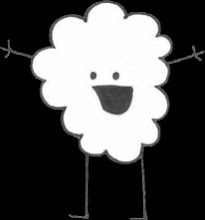
In a time when respectable, often stodgy period films are dominating the end of year awards season, it's good to see adventurous filmmakers giving the genre a kick in the pants. Two films which did so particularly well last year were Tristram Shandy: A Cock and Bull Story and Gabrielle. While Shandy takes its inspiration from Laurence Sterne's legendary yet rarely read literary classic, the novel serves largely as a jumping-off point. Director Michael Winterbottom wisely avoids straightforward adaptation, instead making a film about a film crew adapting Shandy for the big screen, starring Steve Coogan. The form of the film feels like a more manic Day for Night, but in terms of tone it's best described as Airplane! for humanities majors- full of references to literature and classic cinema (everything from 8 1/2 to Fassbinder to, most memorably, Lancelot du Lac), and above all hilarious. In its strange way, Shandy serves as an illustration of the difference between the media of literature and film, not only the processes of creating them, but just as importantly the expectations we have of them. Plus, as Winterbottom surrogate Jeremy Northam says in the film, "it's funny. Isn't that enough?" There are so few cinematic adaptations of great books that work in movie form, but even fewer have Steve Coogan dropping a hot chestnut down his pants.
Gabrielle, on the other hand, is as brutal as Shandy is funny- and that's pretty brutal. Adapting Henry James' story The Return, director Patrice Chéreau tells the story of the fallout from a wife's attempts to escape her loveless marriage. While Jean (Pascal Greggory) is content to love his wife dispassionately, his wife Gabrielle (Isabelle Huppert) resists the ossification of their marriage, and her sudden decision to leave stirs up emotions that she hasn't felt in years, as well as feelings her husband isn't willing or ready to deal with. Gabrielle is essentially a two-hander between its stars, and with Chéreau's firm guidance they turn the story into scintillating drama, lending both heated arguments and simple gestures a real, and rare urgency. In addition, Chéreau breaks free from the constraints of period-film convention, switching between black and white and color at various points during the film, and even filling the screen with large, boldfaced text in several pivotal scenes. But for all the stylistic flourishes on display, it never feels like dicking around, but works as a visual equivalent to the passion unleashed by the story. It's a credit to all involved that the film's final revelation is both surprising and inevitable.






No comments:
Post a Comment